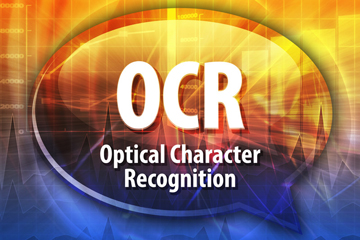
There are several advantages of using OCR technology. It helps businesses in increasing the efficiency and effectiveness of the work. Its ability to quickly search through enormous content makes it helpful for office settings that deals with high document inflow and high volume scanning. Other benefits of using OCR for automated data capture includes increased productivity, cost reduction, high accuracy, reduced errors, increased storage space, greater data security, makes the digitized documents completely text searchable, improves customerservice and keeps data safe even under emergency situations.
As per a Transparency Market Research (TMR) report, the global OCR market is expected to increase at a CAGR of 14.8% during the forecast period 2017-2025 to reach a revenue valuation of US$25.1 billion by the end of 2025.
Best Practices for OCR-based Data Capture
- Start from the Base- The data entry team should analyze all aspects of the data in the printed source material. As factors such aspaper quality, characteristics including language, font, as well as layout and graphical elements may affect the quality of data capture. This will also provide information that will enable the data entry team to determine whether the data capture can be easily achieved or not. For instance, historical documents require lexical data for OCR data entry. Similarly, image-rich documents may require special measures to make them OCR compatible or may need improvised OCR data capture to successfully digitize the documents.
- Set Up OCR Project Goals- AllOCR-based data capture projects must have clear and definite goals. Depending upon the purpose of the project, the data entry team must find the best method that suits the requirements as well as capable of delivering the type of data capture output required. The post-OCR output may also require further manual correction or processing based on the level of accuracy needed for the work. Here are some of the key considerations to take into account to meet the OCR data capture project goals.
- Determining the type of output required and its purpose
- Establishing the level of accuracy of data capture
- Does the data capture project need text-only data capture or should other elements be included that would be used along with the text for more powerful searchability?
- What is the error tolerance of the user?
- Whether the OCR text files would have to be displayed to users
- Have a Well-charted Work Flow- A well-delineated process workflow may not determine the success or failure of the OCR data entry effort. Instead, a well-charted flow will ensure that the data capture and conversion succeeds as per the expectations.
- Perform OCR Quality Check Processes- Every successful data capture projects requires the implementation of quality assurance(QA) procedures as a level of control. This QA program will ensure that the data capture project is on track and the goals are achieved within the desired time. The QA team should carry out a full-fledged review of the entire captured data or a sectional review. QA procedures also include tracking and correcting the data capture errors. All these can be done efficiently by an experienced OCR service provider. It is essential to ensure that the QA strategy is accurately worked out and implemented and the quality standards are communicated to all staff involved.
- Be Flexible to Project Scale and Cost Variations- The needs of OCR-based data capture projects may vary from project to project. In addition to that, there may be changes that happen during the course of the project which may demand modifications. Therefore, data entry teams are required to keep in mind a certain amount of flexibility when coming up with their OCR data capture plans in order to tackle and adapt accordingly. Appropriate level of planning is needed, as changes in scale may influence project schedules and budgets. In the same way, the expected costs of carrying out an OCR data capture task and actual costs incurred may vary widely. In fact, the actual costs may tend to be higher. The duration of OCR data capture project may lengthen or shorten due to unexpected and unplanned reasons. However, advanced planning will ensure allocation of time for these possibilities.
Partnering with a data entry company that is experienced in using OCR technology can ensure efficient and consistent high quality data capture using OCR.




